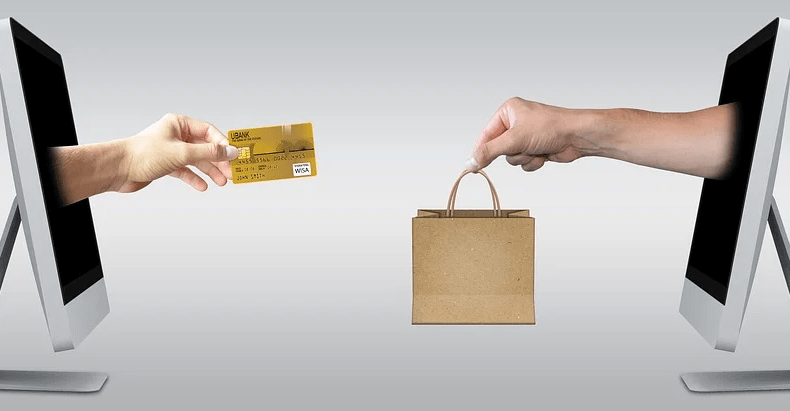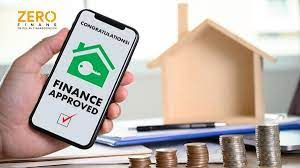
Whether one is a businessman or a salaried professional, people of all age groups prefer to pay with credit cards as it comes with many rewards. Rewards start at the application stage through purchase. It is also preferred as it gives a window for repayment. Here is a detailed description of what a credit card is and its actual workflow.
What is a Credit Card?
A credit card is a thin rectangular plastic card issued by a financial institution. It allows the cardholder to borrow money to pay for the purchase of goods and services. The Cardholder will be required to pay the borrowed amount, along with interest, to the Financial Institution, along with any agreed charges. It is also possible that the financial institution will provide a line of credit so that the cardholder can borrow money in the form of a cash advance. However, issuers will set the borrowing limit based on the income level of the cardholder. Credit cards are considered to be the most popular payment method in today’s world.
How to apply for a credit card?
Step 1: Visit the credit card page on the website of the bank from which you are considering getting the credit card.
Step 2: Read the benefits and features of the listed cards to choose the right credit card from the list available for which you wish to apply.
Step 3: Check the eligibility criteria attached to the card and verify if you satisfy all of them.
Step 4: If you feel that you meet the criteria, then go ahead and click on the ‘Apply Now’ button next to the card details on the bank’s website.
Step 5: In the application form, fill all the required details.
Step 6: Attach a copy of all required supporting documents while applying.
Step 7: The bank will process the application and contact you regarding the status.
How does a credit card work?
A credit card is a line of credit offered by a bank or financial services company to a cardholder. Credit cardholders can use the given credit to make purchases instantly with cash without having to pay in full. Card charges will accrue as a balance to be paid every month or depending on the billing cycle. The buyer gets more time to arrange cash to pay the balance amount. The credit limit is determined based on the credit history and income of the customer. If the customer makes full payment of the statement balance every month, the customer’s credit score increases, which increases the chances of getting a bigger loan.
Also, every transaction done with the credit card will be able to earn some rewards. Conversely, if the customer fails to pay the statement balance on time, interest will accrue on the outstanding balance. The interest charged on unpaid balances is considered higher when compared to other loan types. In this case, in addition to the interest rate, late payment fee will also be applicable. This can damage the credit score of the individual.
Credit card features and benefits
Here is a list of the features and benefits of using a credit card:
- Easier, compact payment method than carrying cash.
- Pay for your purchases instantly with your credit card.
- Payment via credit card is accepted globally.
- Credit cards come with a balance transfer facility where you can transfer the balance from one card to another with a lower interest rate.
- Enjoy an interest-free period where you can pay the balance without any interest charges.
- Make partial payments to avoid paying the entire dues in one go.
- Use the EMI option where you can make equated monthly instalments for your purchases.
- Earn reward points, cashback, flyer miles, welcome and other privileges on every rupee spent with the credit card.
- Some cards offer travel insurance when you travel abroad.
Responsible repayment behaviour can build your credit history and, in turn, credit score.
Hot to get approval?
You are telling us that you have to prove that you can handle the debt? Ridiculous, isn’t it? But it’s true: Credit card companies will check your credit score, your lending history, and your income.. If you look like a good candidate (the bar is pretty low), they’ll issue you a shiny new card with a credit limit based on your credit score.
Activate your card and start swiping.
After you receive your new plastic, call or text the number on the back of the card (or visit their website), give them your card details and viola! You’re the “proud” owner of a new line of credit and everything you just swiped your card from.
Pay off your balance (plus interest).
At the end of each billing cycle, you’ll get a credit card statement listing your current balance. You must make at least the minimum payment by the due date every month. (The minimum payment depends on your credit card balance and the type of card you have.)
If you miss the payment by the due date, you will face late fee. And if you don’t pay off all your balance by the end of the billing cycle, you’ll be exempt from interest.
Say goodbye to your paycheck.
If you’re not careful, credit cards will lead you straight into a never-ending cycle of debt. Next thing you know, you’ll be spending your hard-earned money on the steak dinner you just ate. . . last month. He will not pay the light bill and shopping bills of books.
How does credit card interest work?
Credit card interest is money charged to you if you make only the minimum payment on your credit card balance.
Here’s the deal: Interest is how credit card companies make most of their money. That means they only want you to make the minimum payment, so they can charge you more interest—and make themselves more money. So, the larger your credit card balance, the more interest you pay each month.
It often shows up on your credit card statement as a finance charge (it’s the same thing).
What is APR?
APR (Annual Percentage Rate) is the rate that credit card companies charge you every month for borrowing money from you. And each type of credit card (we’ll get to those in a moment) comes with its own APR.
The average APR on credit cards is 16.3 per cent.3 This will lead to losses.
There are two different types of APR: variable and fixed. With a variable APR, your interest rate can change because it is based on the national average. A fixed APR means your rate stays the same. But depending on the type of credit card you have, there may be reasons for your fixed rate to change (such as if you’re late on a payment by more than 60 days).
Psst, also pay attention to the introductory rates. Credit card processing companies like to use low-interest rates to get you to sign up for their card — but it doesn’t take long before the trial period ends and your rate skyrockets.
Do I need a credit card?
Of course not at all. Let’s reiterate: You don’t need a credit card. No, not one, not two, not three. And not even for emergencies.
You’ve probably been told you need a credit card over and over again because you were old enough to even know what a credit card is. But since when is it a good idea to follow the crowd? (Hint: rarely.)
So, if you have a credit card, it’s time to cut it into pieces. It’s time to tell those dumb credit card companies they can no longer hold you back. This is your income. This is your money. And you’re spending it on what you need today—not on last month’s steak dinner or last year’s leather jacket. You are saving it for your future. You there. Moving. ahead.
Want to Build Real Wealth – Without Debt? With Ramsey+ you’ll learn how to save for emergencies, live without debt, and budget with confidence. Want to take a look? Sign up for your free trial right here.





